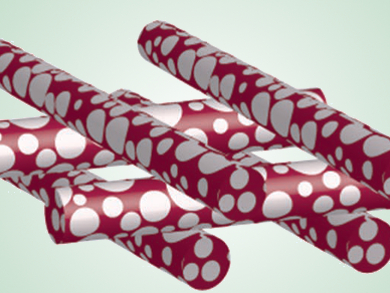Porous materials are of high industrial relevance in such diverse applications as catalysis, biomedical scaffolds, energy storage, heat exchange, and filtration technologies. Many biomaterials like bamboo, bone tissue, or wood owe their exceptional mechanical properties to their hierarchical porous structure.
André R. Studart, Swiss Federal Institute of Technology (ETH) Zurich, Switzerland, and colleagues have found a way to replicate such structures by 3D printing of an alumina emulsion containing propionic acid and poly(vinyl alcohol) as surface modifiers and stabilizers. The structures were printed using a commercially available 3D printer, dried for 24 hours, and sintered at 1600 °C for 2 hours. Porosity at the micrometer scale could be tuned by adjusting the properties of the emulsion ink, while features at the millimeter scale were introduced through the 3D printing process.
An unprecedented strength-to-weight ratio was achieved at very high porosity with the formation of a percolating network of struts at three different length scales. Furthermore, the process allowed the researchers to produce materials with different porosities that are not accessible with conventional methods.
- 3D Printing of Emulsions and Foams into Hierarchical Porous Ceramics,
Clara Minas, Davide Carnelli, Elena Tervoort, André R. Studart,
Adv. Mater. 2016.
DOI: 10.1002/adma.201603390




